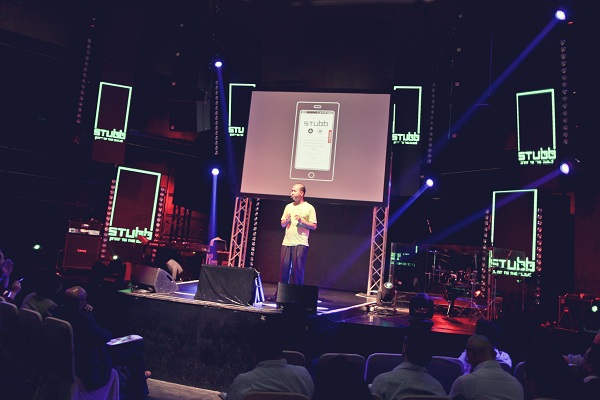by Ken Rutsky, author of “Launching to Leading: How B2B Market Leaders Create Flashmobs, Marshal Parades and Ignite Movements“
In today’s hyper-competitive, global and instantaneous market, where buyers have nearly unlimited access to information and each other, the fight for their attention is like a crowded treadmill constantly gaining speed.
Due to the free-flow of information, buyers have become fiercely independent. A recent survey by CEB reported that 57 percent of the typical business-to-business sales cycle is complete before the buyer’s first contact with vendors. This means that before they’ve even met you, your customers are more than halfway through their decision process! They get data from traditional sources, such as analysts and industry publications, but they’re also connected with social media, peer networks and review sites.
The challenge for marketing and sales professionals in business-to-business markets is breaking through the cacophony of noise and clutter to not only capture buyers’ attention, but powerfully communicate your unique value. It’s about replacing buyers’ current view of the world with a new world view – providing solutions to problems they didn’t know they had. The key is an increased attention to storytelling that goes far beyond product description.
The real power of influence in sales and marketing has shifted from content to context, from value to viewpoint and from evaluation to experience. Companies as disparate as FireEye, Zuora, Virgin America and Salesforce.com have leveraged these breakthrough marketing changes to win over customers and become industry leaders.
When FireEye became my client, their revenues were stalled in the low millions of dollars a year. They had unique technology, but needed help better explaining why that mattered to buyers who were stuck in the old ways of thinking about network security risk, products and categories. By delivering a new story centered on the concept of “modern malware risk,” the company re-launched with an integrated campaign themed around “Modern Malware Exposed.” Three years later their IPO valued the company at more than $2 billion.
Companies who are dominating the competitive marketing conversation know how to find their unique value, articulate a viewpoint and scale and deliver their message experientially.
Let’s explore these three concepts further:
1. Value.
Assessing value is not as simple as you think, and many B2B companies get this wrong. It’s all too easy to become obsessed with a product’s features and benefits, failing to really engage the customer. Start by better relating your value to the customer’s reality, making your solution strategic to their success. Define your business benefits, then filter them against what customers value and what competitors provide. This presents your unique value.
Still, you must be strategic, not just valuable. This is why context – or viewpoint – is the critical next step in the market conversation.
2. Viewpoint.
The often-heard battle cry is: “More content, more content, more content.” Yet, content without context is low-grade fuel, prone to knocks and stalls. To create winning context for your brand, define and tell your viewpoint story. This is the well-planned and consistently articulated context that marries your value with the customer’s reality, taking them to a new, more successful result. A viewpoint can simply be thought of as the story you tell that explains why you’re bringing your product or service to market. It’s a story with four acts, articulated in the context of the customer’s reality, and it goes like this: Act 1 – What’s changed; Act 2 – Solutions from the previous reality fall short; Act 3 – Your re-imagined solution; Act 4 – A vision of the customer’s transformed future.
Even after telling your viewpoint story to drive home your unique value and reach the participation stage, you must continue to the breakthrough stage that maximizes the level of interaction the customer has with your content.
3. Experience.
Communication via experience is vastly more effective at winning customers’ preference than simply relying on description. Buyers have shifted the way they form opinions and make decisions from evaluation to experience. Yet many marketers today are stuck in a world of whitepapers, videos and other explanatory content. When they do reach into engaging and experience-driven content, they do so as a “late in the sales cycle” component of their mix. This misses the fundamental need to satisfy the self-directed evaluation that buyers prefer today. In order to achieve velocity and capitalize on the opportunity, you must put experience front and center, early and often in the sales and marketing cycle. True leadership advantage happens when you have unique value/viewpoint alignment that’s communicated in high velocity, engaging and experiential ways. For example, the days of describing value are over; it’s far better to show the value in a compelling experience, such as interacting with content through multiple senses. The result has a far more memorable impact than from reading a long document.
With a well-defined unique value, strong viewpoint story, and experience-driven delivery, content marketing brings relevant and meaningful insight to customers and growth-hacking initiatives are correctly targeted and executed.
Ken Rutsky is an author, blogger, keynote speaker, and B2B marketing consultant with over 30 years of industry experience. A renowned specialist in achieving and growing market leadership, he has advised a range of B2B companies, including Cisco, FireEye, Lee Hecht Harrison, and such venture capital funded high-growth startups as Jumio and Skyhigh Networks. His new book is “Launching to Leading: How B2B Market Leaders Create Flashmobs, Marshal Parades and Ignite Movements“.
from Young Upstarts http://bit.ly/2BYaRDC via website design phoenix



No comments:
Post a Comment